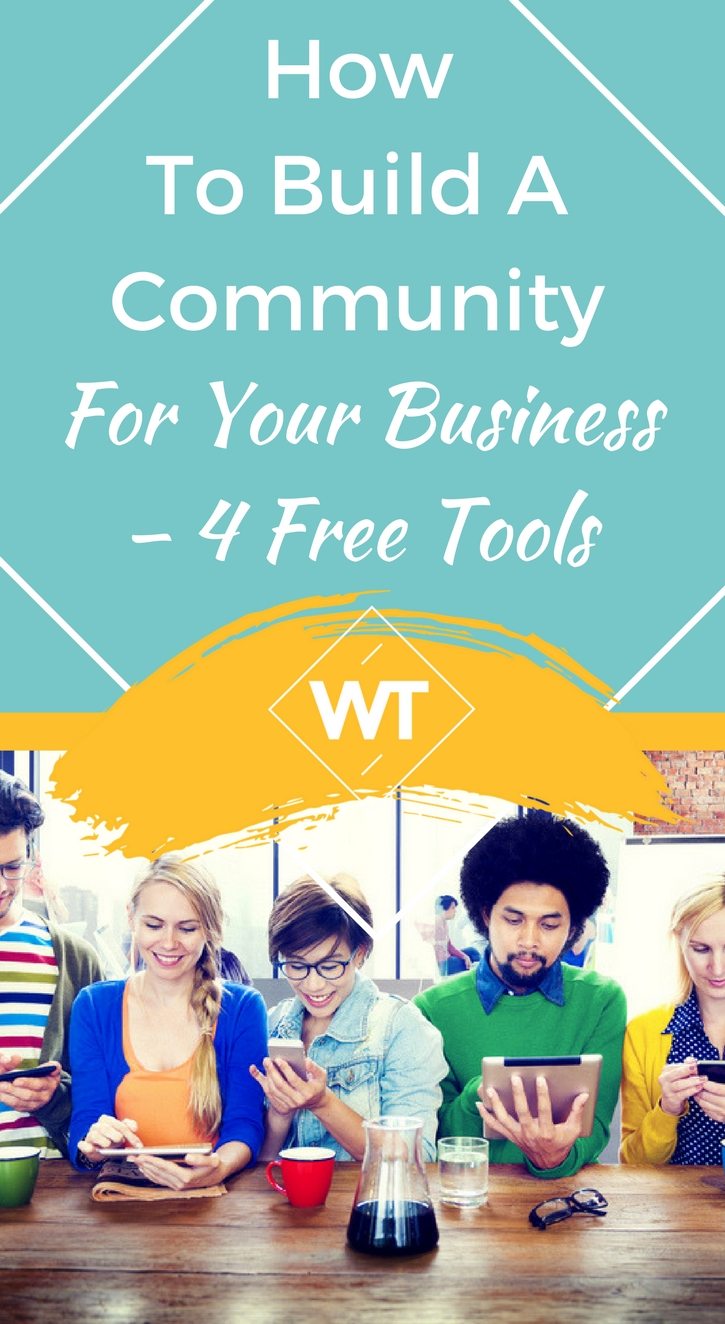How To Build A Community For Your Business – 4 Free Tools

Indeed, how to build a community for your business, probably isn’t the first question that comes to mind for marketing . . . but maybe it should be. Building a community is a solid way of creating brand value for your business. If you remember from previous posts, brand value is the asset in your business that goes beyond websites, property, equipment and revenue. It represents how recognizable your business is in the market and how you are able to occupy the mind of the market.
For instance, Apple has created brand value by fostering a community of “MacHeads.” In Apple’s case, they created an almost cult-like following for their products. The Apple following is such a phenomenon it even has its own MacHeads documentary.
You don’t have to be the next Apple in order to create some serious brand value or expand your business. However, you do need to create community around your business. Some of the ways to do this include rallying people for a cause (like Apple did), creating a lifestyle (like Redbull) or turning your business into a status symbol (Starbucks).
How to build a community with these 4 free tools
Learning how to build a community—and then executing on that plan—takes time, but it need not take money. There are free tools you can use in order to start fostering community and connecting with your market. Just note that with all of these free tools you are subject to the platform’s terms of service. That means that if Facebook wants to shut its doors or change the rules tomorrow, that you will be affected. That’s why it’s important to encourage people on these platforms to join your own email list as well.
1. Facebook Groups
Facebook groups have practically replaced traditional online forums. It used to be that you’d go to website with a forum and connect with people via message boards. Facebook allows this same ability via their Facebook Groups feature. The only difference is the group communicates on a wall (like the one on your personal page) instead of separate forum messages.
Additionally, Facebook groups are great because there’s a good chance that members of your market already have a Facebook account. So rather than having to go out and find these people, or having them create a separate account to access a forum, you just meet them where they’re at.
For example: At Wisdom Times itself, we like to connect with people interested in “wisdom” and “entrepreneurship” and a good Facebook group example for this is our wisdompreneurs group.
2. LinkedIn Groups
Similar to Facebook Groups, LinkedIn Groups allow you to build a community using the social media platform made specifically for professionals. If your business caters to professionals (i.e., you’re a career coach or you offer resume services) then you will likely want to meet your market where they already hang out.
I’ve seen this work very well for executive recruiters, career coaches, resume-building platforms and other businesses which cater to the needs of professionals.
Additionally, you can make a LinkedIn Group based on a specific industry. Let’s say your company rents equipment to construction companies. Perhaps you’d want to make a group specifically for those in the construction industry to discuss best practices, equipment, or how to build a construction business, etc.
This is just one example of many, but it’s easy to see how LinkedIn allows you to leverage your industry in an effort to build community.
3. Periscope
Periscope is the new kid on the social media block and so far it’s proving to be phenomenal for building a community and establishing relationships. Periscope is a streaming app that was acquired by Twitter in early 2015. In a few short months it’s grown in popularity and businesses use it to broadcast live to their audience.
Smart business owners have realized that Periscope is a free marketing tool that allows you to directly connect with your audience live. Up until this point no other social media tool has allowed us to do this, which is why Periscope is so brilliant.
By teaching valuable content, engaging with your audience and making sure your broadcast is shared all over social media, you can quickly build a community and your following simply by hitting “Broadcast” on the Periscope App.
Other companies have taken notice of Periscope’s rapid popularity and have begun debuting their own live streaming apps. Facebook, for example, recently unveiled Facebook Live, which is meant to allow celebrities and public figures to stream video live to Facebook’s 1.5 billion monthly users.
4. A Blog
Blogs are a marketing tool, but they are also great answer for how to build a community around your brand. For example, Carrie Smith from the Careful Cents blog started as a blogger and has since turned the blog into a thriving community where freelancers can get advice about finances and business.
She does this by combining multiple tools. If you join Carrie Smith’s Freelancer’s Club on her blog then you are added to an email list and given access to a Facebook group where you can interact with other freelancers. This is an awesome example of how to have different tools working together for the purpose of building a solid community.
Final thoughts
The best part about all the aforementioned tools (with the exception of paying for hosting for a blog) is they are totally free and easy to set up. While it can seem overwhelming to combine all of these tools and have them work together, keep in mind that you can start with one and then layer in the others as time goes on.









Leave a Reply